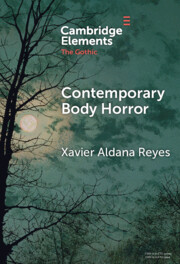Element contents
Contemporary Body Horror
Published online by Cambridge University Press: 14 November 2024
Summary
- Type
- Element
- Information
- Series: Elements in the GothicOnline ISBN: 9781009280976Publisher: Cambridge University PressPrint publication: 05 December 2024
References
- 1
- Cited by

